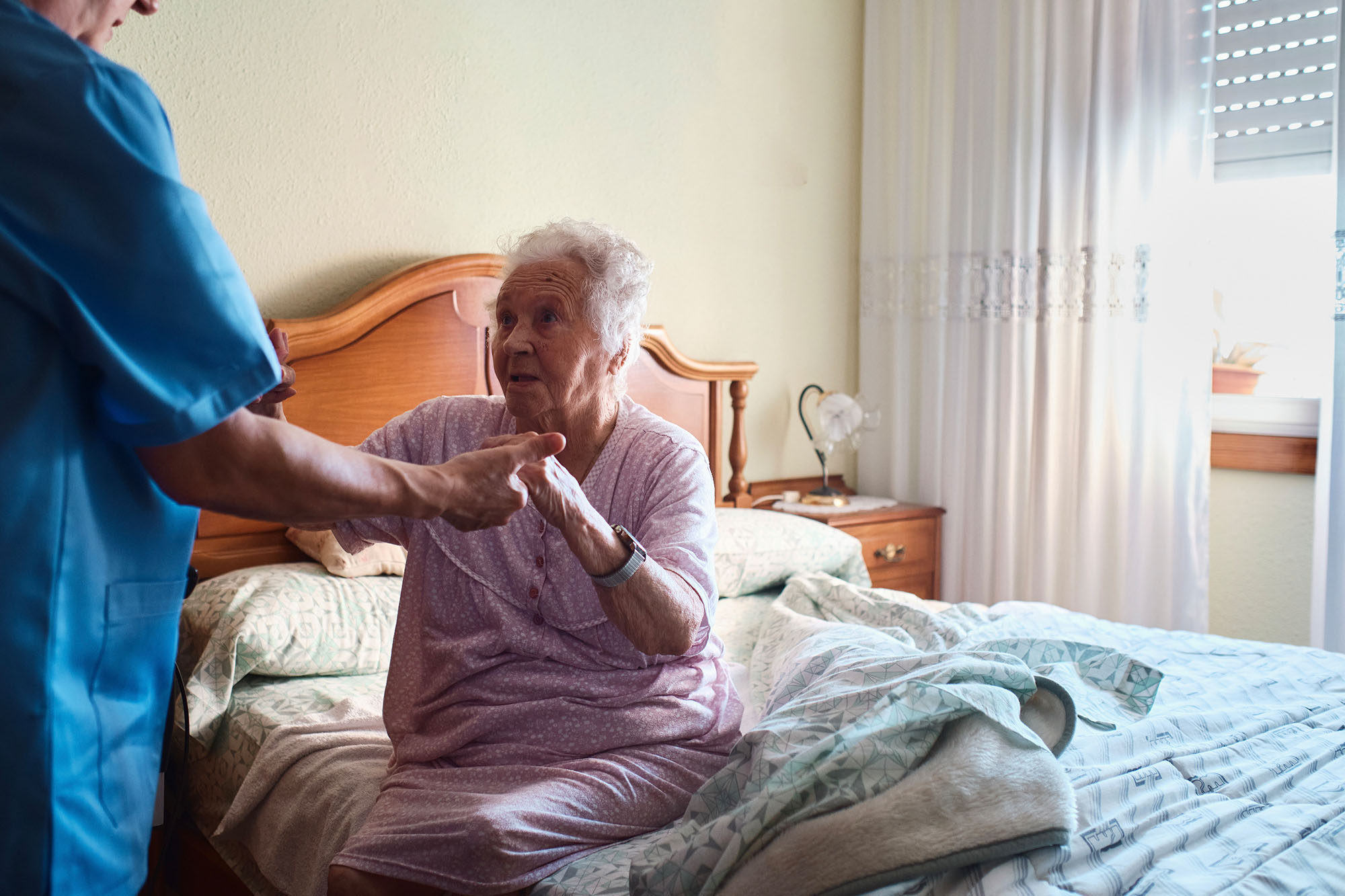D: Define (or Refine) Strategies to Identify and Engage MCP Members
The Medi-Cal managed care plan (MCP) and palliative care (PC) providers identify eligible members through inbound referrals, MCP claims data, and MCP staff referrals. MCPs seek referrals from primary care providers and specialists in their provider networks, with education about the value of palliative care and about the MCP PC program.
“We removed the requirement for a physician gatekeeper as the only person who could refer. Now anyone can refer a patient to us.”
—Established program representative
In this section:
- D1: Processes for MCP Internal Case Finding
- D2. Education and Engagement for High-Value External Referral Sources
- D3. Processes for Member Engagement and Education
- D4. Educational Materials for MCP Members and Families
- Progress in California
D1: Processes for MCP Internal Case Finding
Strategies include internal referrals from other MCP programs that support members with serious illness, case finding using risk stratification tools, and data reports from claims, encounters, authorizations, and pharmacy.
- Minimum: Specify processes for identifying eligible members through referrals from other MCP programs and from analysis of diagnoses and utilization data such as hospitalizations and emergency department visits.
- Enhancements: Create palliative care–specific reports that combine different data sources, or use predictive modeling to identify members who might benefit from palliative care. Create referral volume goals for MCP case managers or other key staff.
Tools and Links
SB 1004 Promising Practices: Identifying Eligible Patients (PDF) details strategies for community-based palliative care in Medi-Cal (CHCF).
Managed Care Processes for Identifying Eligible Members (PDF) (CHCF compilation of MCP resources).
D2: Education and Engagement for High-Value External Referral Sources
Promote program with high-volume, high-value referral sources including hospital-based PC providers, hospital discharge planners and case managers, specialty care medical groups, and community organizations that serve Medi-Cal enrollees with serious illness.
- Minimum: Create and disseminate materials written for health care and social services professionals that describe PC. Create patient-facing materials for these partners’ patients/clients, in multiple languages to support equitable access. In these materials, distinguish palliative care from hospice and describe how PC aligns with other MCP and community-based services.
- Enhancements: Meet regularly with the individual professionals at these high-value referring partners who serve seriously ill MCP members. Use these meetings for ongoing relationship management and monitoring of the progress of these partnerships.
Tools and Links
SB 1004 Promising Practices: Referral Processes (PDF) lists common barriers and six effective strategies for community-based palliative care in Medi-Cal (CHCF).
Education and Engagement Materials for Providers (PDF) (CHCF compilation of MCP resources, also listed in Section B4).
Provider education presentation template, in PowerPoint format (ZIP) (CHCF compilation of MCP resources, also listed in Section B4).
D3: Processes for Member Engagement and Education
Where prior relationships exist, the MCP member/patient is introduced to palliative care by that MCP staff person or the community provider. This person with an existing relationship explains the PC program and its benefits, and then facilitates a warm handoff to the PC organization.
- Minimum: Orient MCP staff to palliative care as a specialty health care service, and to the MCP’s own program specifically, so staff are prepared to discuss PC services with members.
- Enhancements: Establish warm handoffs as a standard expectation for all MCP members starting PC, and create a performance metric to track success. Provide in-depth training to MCP staff to increase comfort discussing palliative care with members and their families.
Tools and Links
“Care Managers: Addressing the Unique Needs of Patients with Serious Illness,” toolkit with an available training course, based on motivational interviewing (Center to Advance Palliative Care [CAPC], available to members).
“Palliative Care for Care Managers,” self-paced course (Shiley Haynes Institute for Palliative Care, California State University).
Primary Care and Referrer Role in Member Engagement (PDF) (CHCF compilation of MCP resources).
D4: Educational Materials for MCP Members and Families
MCPs and PC providers collaborate to develop clear, accessible materials to promote the program and clarify the who, what, and why of PC. Information is distributed through websites and in printed form, at the required Medi-Cal reading level and in the MCP’s threshold languages.
- Minimum: Develop print materials and web content for MCP members, with clear and simple language to describe how PC supports patients and families while patients are treated for their disease. Clearly distinguish palliative care from hospice.
- Enhancements: Increase awareness of PC and the MCP program among community-based organizations serving seriously ill people in the Medi-Cal population, including providers in the MCP’s Health Homes and Enhanced Care Management programs.
Tools and Links
Palliative Care: What You Should Know, one-page general explanation of PC as a type of medical care (CAPC).
Template for trifold brochure text for palliative care programs (CAPC).
Education and Engagement Materials for MCP Members and Families (PDF) (CHCF compilation of MCP resources, also listed in Section B4).
Progress in California
In a March 2021 survey by CHCF and the Coalition for Compassionate Care of California, a shared priority for the next year for both MCP respondents (at 89%) and PC provider respondents (at 71%) was to increase program enrollment. The chief concern related to program sustainability for both MCPs and PC providers was too few patients/members.
The top two barriers to a successful program, according to the PC provider respondents, were “PCP unwillingness to introduce/recommend palliative care” (at 77%) and “too few referrals” (at 74%).
“To build referrals, patient stories are the most effective. To make it fun, we use a ‘Who is eligible?’ quiz in sessions with referring groups.”
—Established program representative
Authors & Contributors
Hunter Gatewood
Hunter is a consultant and teacher in leadership and improvement with his company, Signal Key Consulting. His connection to palliative care stems from experience in social work case management with high-mortality populations, and more recently in serving palliative care providers in quality improvement and systems integration efforts.
Kathleen Kerr
Kathleen is a health care consultant in private practice in Northern California. Her work is focused on promoting the development of sustainable, quality palliative care programs, with particular emphasis on services that operate in rural areas and those that serve Medicaid enrollees.






